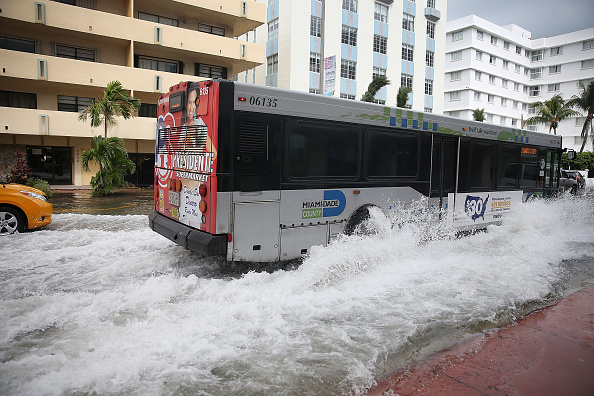Trending
19th century lessons from Seattle could help Miami cope with sea-level rise: ULI event

Raising streets, relocating key facilities to protect infrastructure and figuring out how to pay for rebuilding after a major disaster like a massive hurricane are the topics that planners, government officials, and even developers think about a lot in Miami.
It turns out that the same could be said of people who lived in Seattle at the end of the 19th century. A massive fire that destroyed most of Seattle in 1889 had many predicting the end of the city, but Seattle’s citizens dug in, and began a decades-long effort to rebuild and re-shape their city for the modern era.
David Williams a geologist and the author of “Too High & Too Steep, Reshaping Seattle’s Topography,” says the lessons learned from Seattle’s experience could help Miamians when it comes to what looks to be a decades-long fight to preserve Miami from sea-level rise.
He spoke last week at an Urban Land Institute seminar about how sea-level rise lessons from Seattle could help Miamians prepare for the future.
Williams said that after the fire, Seattleites raised streets by an average of 10 feet, and by as much as 22 feet in the heart of downtown, around Pioneer Square. New codes required buildings to be made of durable materials like stone and brick, and large areas of marshland were filled in to create a much larger downtown area. Williams stresses that much of what was accomplished could not be done today under current environmental and regulatory statutes but he told The Real Deal that a key aspect of the rebuilding, which took decades was taking advantage of an unexpected catastrophic event to build for the future. “I think part of it was they were looking to the future, and they realized this was a short-term event with long-term implications,” he said.
Miamians are not waiting for a disaster like a category 5 hurricane to figure how to build resilience. According to a national Wildlife Federation report published last year, Miami stands to lose up to $3.5 trillion in assets by 2070 due to sea-level rise. The city of Miami Beach is already spending at least $400 million raising streets and installing pumps to protect residences and businesses for ever-increasingly intrusive flooding largely caused by rising coastal tides.
James Murley, the chief resilience officer for Miami-Dade County, said the county’s main concern is billions of dollars of infrastructure, much of which is invisible because it’s below ground.
He told TRD that building resiliency can also be accomplished by helping to protect the natural landscape of south Florida. “I see the beaches as infrastructure. Not only is there economic benefits but they also protect us from storms and sea level rise,” he said. “It’s not just hard infrastructure like sea walls, it can also be done by maintaining our mangrove fringes and by enhancing our green infrastructure.”




